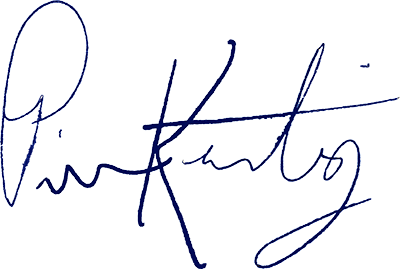Let’s just pick up right where we left off.
In Kenny Werner’s clinic for the IAJE, he goes on to tell a story of a drummer friend who had been practicing yoga. This drummer had expressed to Werner how he was hoping to “get it into my playing,” – meaning the yoga, and whatever other spiritual practices he had been doing at the time. Werner points out the disconnect here:
What really shocks me is how often I meet people who have a great commitment to some kind of program for their lives… and then they play, and they get into the box – as if they had no references to something wider than that. They think music is something different… Whatever state of mind you’re creating through whatever discipline… whatever it is you like… whatever generates passion in you… So [the guy] said, ‘I don’t know how to connect spirituality with being a jazz musician,’ and I said, ‘It’s easy. Don’t be a jazz musician. If you’re studying yoga, be a yogi who plays music. [29:24 – 31:20]
Werner’s trying to point out that so many jazz musicians are, ironically, becoming imprisoned by the very thing they initially thought would make them free.
Let’s use Jazz as a metaphor for Art. Jazz, by its nature, by its definition, is free, it is a freeing practice – at least it ought to be. For any Artist, he or she cannot help but create Art – that’s what made him or her an Artist in the first place. The creation of Art makes the Artist feel free, or at least, that the Soul is expressing itself in the way it was meant to.
But there is a danger here, especially with Art forms that require a particular degree of seriousness, of dedication – the Artist can, and often does, get trapped in her own process. Why and how does this happen? Often, because of misconceptions from outer influences – school, teachers, fellow artists – about how the Art should be.
What I understand Werner to be saying is that rarely does the misconception come from within the Artist. The Artist’s inner voice is usually pure, and wants to do what it wants to do. But through the process of learning, of refining, of “honoring the tradition,” something any self-respecting Artist should do, he is now faced with the new danger of losing trust with the authentic thing inside of him that made him want to play music, or draw, or act, or create, in the first place. Teachers continually throw out new techniques to be mastered, colleagues and cohorts engage in competition, consciously or unconsciously, to see who can “swing harder”, and whichever world the Artist happens to be engaged in, whether it be Jazz, or visual art, or film, or any number of others, carries with it its own sets of expectations, standards, and trends.
The “inner critic” does not come about until it’s been exposed to an outer one. Don’t get me wrong, some amount of criticism can be healthy, and necessary, especially for an Artist who wants to be aware of her roots and “learn the language” of her particular Art, and stay true to it. It can help mediate an otherwise unchecked wildness which could be as debilitating as its opposite. But I am of the opinion that we don’t now live in a world where this the problem.
Going back to what Keith Jarrett said:
If you hear something that changes you, it’s because what you heard was someone who became an innovator, and they became an innovator by hard work on themselves, not so much work on the instrument. [NEA Jazz Masters Awards Speech, 2014]
This “hard work on oneself” could be interpreted in many different ways – today, let’s just say that it means having the irreverence to become a Yogi. According to my dictionary:
The yoga widely known in the West is based on hatha yoga, which forms one aspect of the ancient Hindu system of religious and ascetic observance and meditation, the highest form of which is raja yoga and the ultimate aim of which is spiritual purification and self-understanding leading to samadhi or union with the divine.
So, a Yogi seeks to attain, above all, “spiritual purification and self-understanding.” For an Artist, this could mean cutting through the BS of external pressures, critiques, styles, and “correctness” to get back to that deep, primal thing that makes us tick. Whatever it may be. Because, once we get back to that, once we reunite with it, that’s apparently where the real music will start to come out.
But don’t take my word for it – just ask Kenny or Keith.
